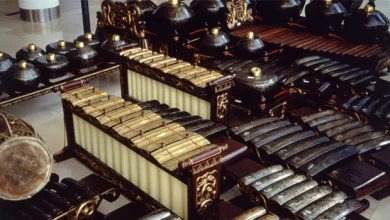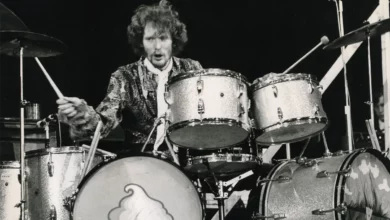
I experienced Celtic music long before I could speak. My parents would play Irish drinking songs around me, even as a baby (it was the nineties, things were different, ok?!). As I got older, my interest in Celtic music grew. We had seen Riverdance twice by the time I got to elementary school.
In this article, I will give you a summary of Celtic drumming through the ages, including details about the different kinds of percussion used, as well as the way religious/ spiritual practices have affected the music from this region.
What is Celtic Drumming?
Celtic music is the music of the Irish, Scottish, Welsh, and Gaulish people (and more). Celtic music predates Christianity. There was once a time when everything above the river Danube was considered Celtic.
The type of drumming from this area generally uses a frame drum, a wide membranophone with a short depth. Some music historians say this type of drum was the first ever to be created. Celtic drumming also includes other instruments, such as spoons and bones (exactly what it sounds like!), snares, and, later on, tenor and bass drums.
The Celts
Celtic drumming fittingly began with the Celts. The Celts were an ancient group of people who came from many tribes in Europe and even Anatolia (Highlands in Turkey).
Celtic people were pagans, so they practiced polytheism, meaning they worshipped many gods. Some such gods include Eostre ( a spring goddess that the word/ holiday Easter comes from), Macha (a war goddess), and the Dagda (or leader of the gods). It is estimated that these people had over 400 gods in their pantheon. Like many other types of drums, Celtic drums are intertwined with religion.
Celtic Shamans
Historically, Celtic shamans (also known as Druids) used drums to aid them in their altered states of consciousness. Musicians like Corby Ingold have even compared Druidism to Santeria, an Afro-Cuban religion, which shows how universal the concept of drumming and spirituality is.
Other Uses of Celtic Drumming
Monks also used Celtic drumming to accompany their poetry. Bards traveled with their drums, poetry, and small string instruments and celebrated art. Later, Celtic drumming became a way for soldiers to stay in step.
The Spread of Celtic Music
When Europe was largely Pagan, Celtic drumming (and Celtic music as a whole) was able to spread far and wide—according to Britannica.com, a Latin author by the name of Lucan called Gaulish and English poets’ bards’ as early as the 1st century AD, suggesting that Celtic music is very, very old indeed.
The Ban of Celtic Drumming
While there were some practicing Christians as early as the 1st century AD, there weren’t many. After all, the Romans were persecuted until the 4th century for this religion. However, records of Christianity indicate that it started to spread in Ireland in the 5th century. So why am I talking so much about religion in a drumming article?! Good question. It’s because Celtic music was banned.
Despite Celtic drumming having hundreds of years to flourish, as Christianity became the predominant religion, many Celtic instruments became illegal. Early Celts practiced Paganism, which the Christians were not a fan of. To stop these celebratory heathens, they enacted such bans. Later, as Celtic culture blended with Christianity, so ironically, it came to be nearly inseparable from the religion that once banned it.
Resurgence
In the 1960s and forward, there was a Celtic and Irish folk music revival. The effects of said revival are apparent even today — I’ve seen Celtic frame drums in elementary music classrooms, Orff music conventions, and dozens of folk performances with elements of Celtic drumming.
Examples of Celtic Percussion
Many Celtic drums are membranophones, meaning a head is stretched over the drum.
Bodhrán
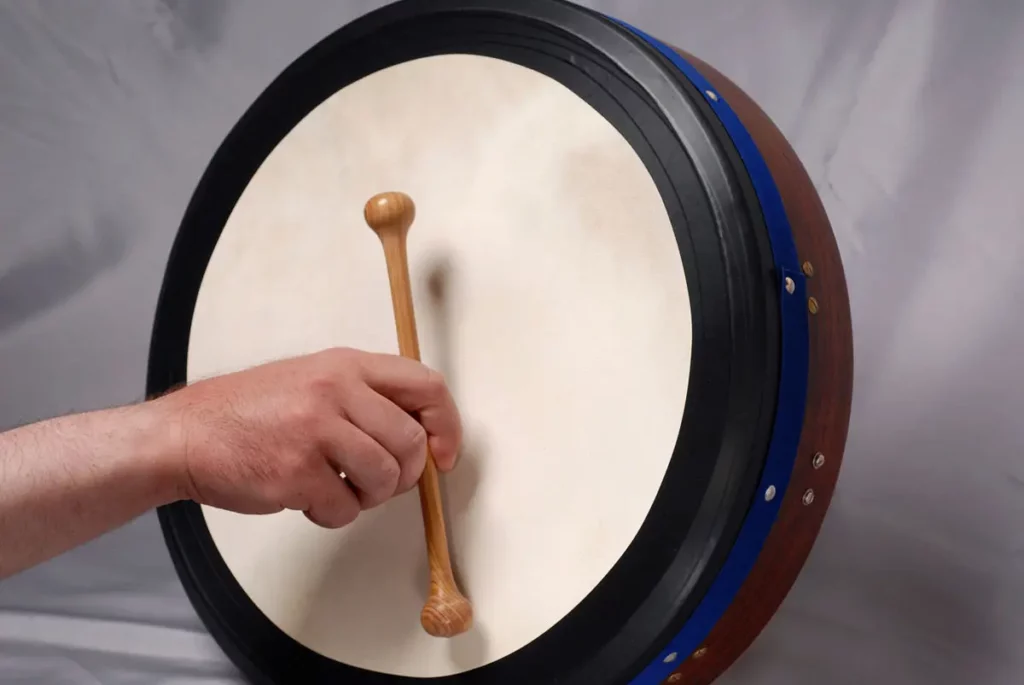
The bodhrán is an Irish drum. Although it’s been around since the 1400s, it didn’t get its name until the 1800s. It is also known as the ‘Druid drum’ because of its use to achieve trance-like states.
Others believe that the bodhran did not originate with the Druids but resulted from a farming tool being turned into a musical instrument. Bodhrans are played with a type of drumstick called a tipper, but they can also be played with your hand. The head is traditionally made of goatskin. Modern bodhrans and other Celtic drums often have adjustable heads that you can tighten with screws so that you can change the timbre at a moment’s notice.
One fun fact about the instrument’s name is that it is Irish for the word “Deaf.” So the bodhran can indeed be quite loud, especially with other traditional instruments!
You can listen to the drum in context here.
Tabor
A tabor is a small snare drum from Medieval times. Like other types of Celtic percussion, the tabor and small flutes/ pipes often went hand in hand. Tabors also had drum heads, like the bodhran.
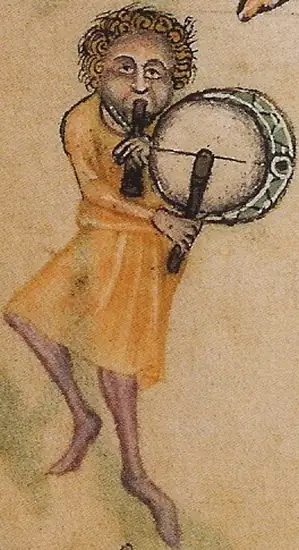
While often referred to the tabor as a provincial or French instrument, the Gauls / Gaulois people occupied this area, so it can still be technically called a Celtic instrument. It first came about around 1300 and can still be heard today. Tabors were found from the Pyrenees to England.
Spoons

Have you ever taken a trip to the Southern US and been treated to a relative playing with spoons in the kitchen? No? That could be my quirky childhood. The Appalachian tradition of playing spoons comes from old Irish music. You tap two spoons on top of one another on a surface, such as your knee. Sometimes the spoons are wooden (often rosewood), but you’ll also see metal ones in modern times. And while you can order special spoons, ones from the kitchen work just fine.
This piece of hand percussion adds a unique auxiliary sound to Irish and Southern folk music. But it is worth noting that spoons aren’t exclusive to Irish/Celtic culture. Spoons can also be played in everything from Russian to Canadian folk music.
Bones
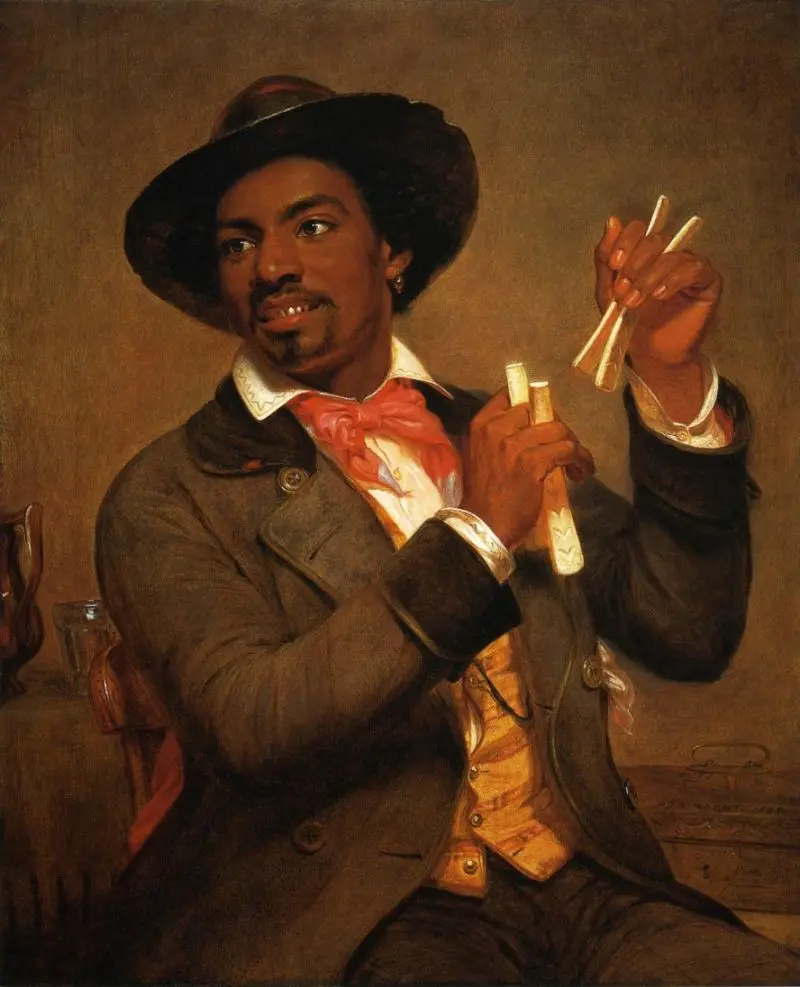
If we take it back even further, we get the phrase “playing the bones.” Playing on spoons likely originated from playing on two rib bones back in time. Modern “bones” are also made of Rosewood. Like the spoons, the bones also made their way into American music. Here is a great instructional video on how to play the bones.
Here’s an example of someone teaching how to play them in the Irish style.
Accompanying Instruments
Celtic drums are often paired with winds or string instruments such as:
- The harp
- Bagpipes
- Tin whistle
- The carnyx
Side note: The carnyx is a rare ancient wind instrument similar to what we now know as a trumpet. You can take listen to one here.
Newer Celtic Drums
Bass and tenor drums were added to Celtic pipe and drum ensembles hundreds of years after the above instruments. And while it’s hard to trace the exact lineage of the bass drum, the tenor drum is distinctly Celtic.
Celtic tenors drums are not the pitched multi-drum set you’ll see on the marching field today; they are medium-sized drums with double heads. You can hear one here.
Other (historically) newer Celtic drums include modern snares; drums evolved from the tabor. Celtic snares are higher than American snares and have a distinct timbre.
The Drumming of Four Celtic Nations
As I mentioned earlier, the four main Celtic groups you’ll hear about include the following:
- Irish
- Scottish
- Welsh
- Gaulish
Everyone knows about Irish music, so I wanted to compare and contrast the other three groups. The Scottish people are also known as Highland Scots, to which pipes and drums can be attributed.
Wales is also considered Celtic, which many folks don’t know. The music of Wales has a distinct history from that of Ireland and Scotland. Traditionally Welsh music is most known for using the tabor.
The Gaulish people were from modern-day England and Ireland, all the way up to parts of Switzerland, where pipes and drum ensembles originated.
Pipes and Drums
Pipes and drum ensembles are relatively modern compared to the bards from 1-5 century AD. In Switzerland, pipe and drum ensembles came about in the 1500s to keep soldiers marching together.
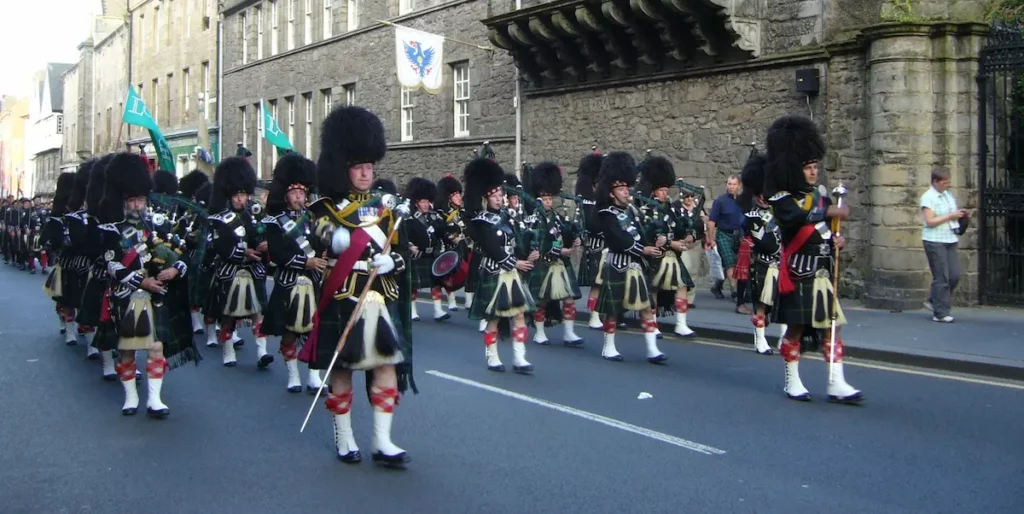
It’s interesting to me that the Celtic people were in Switzerland and parts of Turkey since we often think of Celts being just from Ireland and Scotland. Even the creation of American marching bands can be attributed to these pipe and drum ensembles.
Modern Celtic Music
Some examples of modern music that has Celtic drumming include:
- The musical Riverdance by Bill Whelan
- The pipe and drum band Clanadonia
- Tommy Hayes (A famous Bodhran player)
- The English-and-Irish folks-song-inspired band Flook
There is a wealth of history and music knowledge to be gleaned from the topic of Celtic drumming. Thanks for going down this rabbit hole with me!
